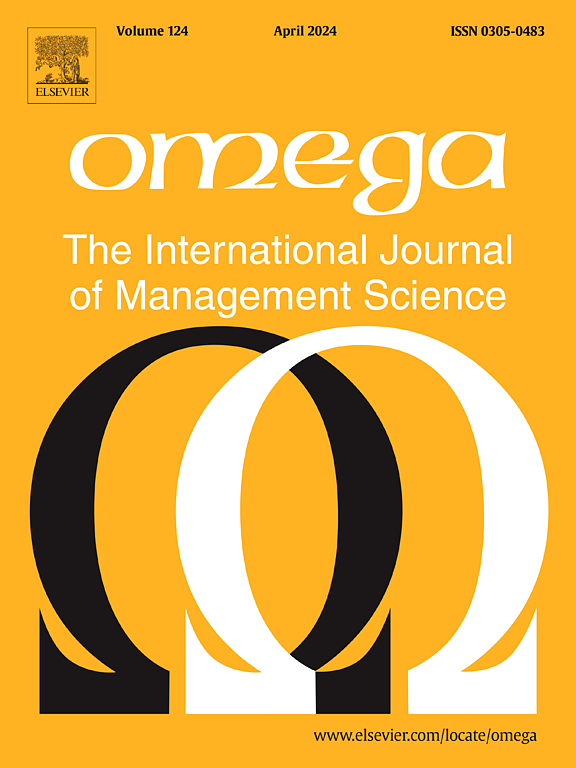Sparse facility location and network design problems
IF 7.2
2区 管理学
Q1 MANAGEMENT
Omega-international Journal of Management Science
Pub Date : 2025-03-26
DOI:10.1016/j.omega.2025.103319
引用次数: 0
Abstract
To further minimize the number of facilities even if it entails additional costs, policymakers often have this preference during facility location decisions. To cater to this preference, we introduce a sparsity-inducing term in this paper. This term generates sparse solutions for both the facility location model and the facility network design model, leading to the proposal of a sparse facility location model and a sparse facility network design model. These two sparse models are formulated as nonlinear mixed-integer programs, featuring objective functions that are non-Lipschitz continuous concerning continuous variables, making them highly challenging to solve. Consequently, we propose a continuous relaxation approach that converts these sparse discrete models into continuous nonlinear programs. We validate the efficacy of both the sparse discrete models and the relaxation method through two classic case studies.
稀疏设施选址与网络设计问题
为了进一步减少设施的数量,即使这需要额外的成本,政策制定者在决定设施选址时通常会有这种偏好。为了迎合这种偏好,我们在本文中引入了一个稀疏性诱导术语。该项对设施选址模型和设施网络设计模型都产生了稀疏解,从而提出了稀疏设施选址模型和稀疏设施网络设计模型。这两种稀疏模型被表述为非线性混合整数规划,其特征是目标函数对连续变量是非lipschitz连续的,求解起来极具挑战性。因此,我们提出了一种连续松弛方法,将这些稀疏离散模型转换为连续非线性程序。我们通过两个经典案例验证了稀疏离散模型和松弛方法的有效性。
本文章由计算机程序翻译,如有差异,请以英文原文为准。
求助全文
约1分钟内获得全文
求助全文
来源期刊

Omega-international Journal of Management Science
管理科学-运筹学与管理科学
CiteScore
13.80
自引率
11.60%
发文量
130
审稿时长
56 days
期刊介绍:
Omega reports on developments in management, including the latest research results and applications. Original contributions and review articles describe the state of the art in specific fields or functions of management, while there are shorter critical assessments of particular management techniques. Other features of the journal are the "Memoranda" section for short communications and "Feedback", a correspondence column. Omega is both stimulating reading and an important source for practising managers, specialists in management services, operational research workers and management scientists, management consultants, academics, students and research personnel throughout the world. The material published is of high quality and relevance, written in a manner which makes it accessible to all of this wide-ranging readership. Preference will be given to papers with implications to the practice of management. Submissions of purely theoretical papers are discouraged. The review of material for publication in the journal reflects this aim.
 求助内容:
求助内容: 应助结果提醒方式:
应助结果提醒方式:


